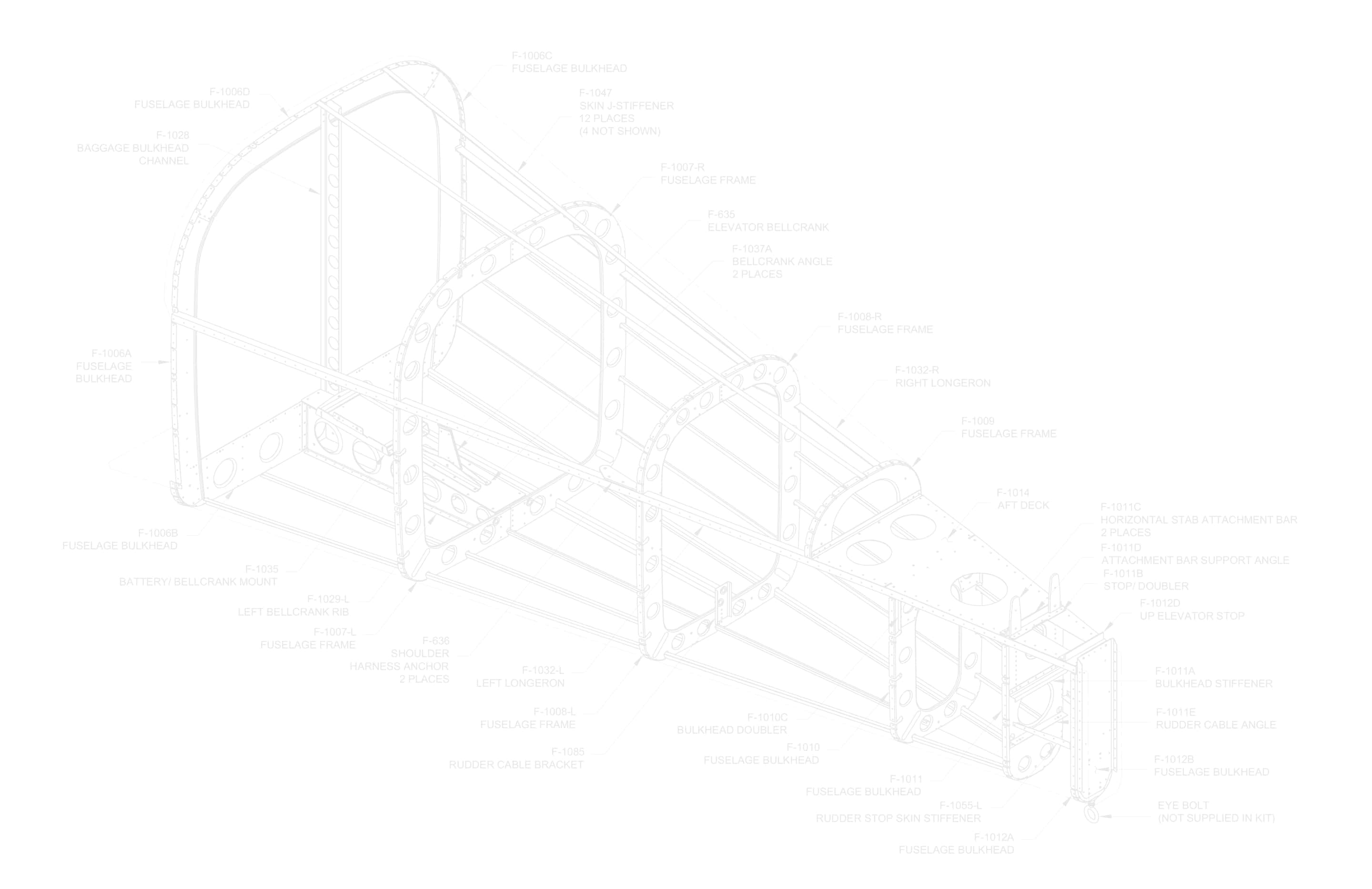The Original RVs
Where It All Began
- RV-3
- Wear this aircraft like a glove, an extension of your body. It's the only single-seat aircraft we've built for production.
- RV-4
- Light, fun, fast... with room to bring a friend. Minimum compromises made for speed and agility.
- RV-6/6A
- The most popular RV ever.
Quick, comfortable, capable. Two seats side by side was the magic elixir.

Overview
When Richard VanGrunsven put pencil to paper on his first airplane design, he coined the phrase “Total Performance” to describe his objective. He wasn’t trying to build the fastest airplane, nor one with the shortest takeoff roll, nor one that would win an unlimited aerobatics title. He wanted an airplane that was “very good” at as many things as possible, even if it wasn’t necessarily the absolute best in any single category.
He succeeded. Multiple times.
Over the course of our company’s 50+ year history, these machines, the RV-3, RV-4, and RV-6/6A have been the cultural and conceptual “center of gravity” for us and thousands of RV enthusiasts. The RV-3 was first, a truly new machine that sought new performance and efficiency in a world of compromised builder-flown aircraft. Soon enough its two-seat follow-on, the RV-4, came to define what a light, agile, perfectly balanced airplane could be. Van’s was growing and gaining a reputation for solid, utterly “buildable” airplanes.
Then came the side-by-side RV-6 and, later, the tricycle-gear RV-6A (a first for Van’s), which eclipsed the first two in popularity—nearly 3,000 were built.
Times change, and with newer designs employing manufacturing technologies to make them much easier to assemble, the Legacy RVs have been retired from active kit production as of September 2025. Technical support and parts for repair will remain available, however, because once you’ve owned an RV, you’re part of the family.
RV-3: Solo Delights
The RV-3 is fast. It will easily top 200 miles per hour on 150 horsepower. Even on smaller engines, it will cruise at three miles a minute. But speed is only part of the equation. The RV Grin starts with the takeoff roll and climb. It doesn’t take long to get airborne! The climb rate is exhilarating. In the air, the RV-3 is a joy. The controls are smooth, powerful, and almost perfectly harmonized. Sport aerobatics are delightful. Flying an airplane that handles this precisely and easily is a new experience for pilots used to flying production airplanes – and even to some used to flying fighters…
Landings are straight forward. Simple hinged flaps, an effective wing, and excellent low-speed handling let the RV-3 land at almost any airport, and the rugged steel rod landing gear can handle a variety of surfaces; dirt, gravel, grass or pavement. Many RV-3 owners keep their airplanes on private strips at home…. some of them as short as 700 feet!
Despite the fact that it was designed as a sport airplane, the RV-3 has proven a capable cross-country traveler. The fuel capacity allows practical distances, the cockpit is big enough for pilots up to about 6′ 3″, and there is enough baggage space to carry a reasonable amount of “stuff.” The speed, climb rate and STOL performance all enhance the cross-country ability, too. Headwinds don’t hurt as much, there’s no more grinding around in circles trying to get high enough to get out of mountain valleys, and almost any flat spot can serve as an emergency landing strip.
RV-4: All the aerobatic fun, twice the seats
The all-around capabilities of the RV-4 are impressive. Fast, agile and fun, pilots of the RV-4 find it’s glove-like fit to feel like a natural extension of their bodies. The RV-4 has taken part in a variety of performance competitions over the years, from the National Championship Air Races to a variety of aerobatic competitions. In the photo on the right, Axel Alvarez pilots his fast RV-4 around the pylons at the air races in Reno. Several RV-4 pilots have also successfully competed in organized aerobatic competitions, scoring well against specialty aerobatic airplanes.
Like the RV-3, the RV-4 gets a lot of performance from not much horsepower. With a frugal 150 HP engine, the RV-4 clips along at nearly 190 mph. On 180 HP, the largest recommended for the RV-4, it is capable of 200 mph cruise along with a climb rate of nearly 2,000 fpm — and these are real-world numbers at maximum gross weight. Many airplanes in the RV-4’s weight class claim better performance. Few can prove it.
RV-6: The most popular RV… still!
The side-by-side RV-6 and its cousin, the tricycle-gear RV-6A were introduced in 1986 and soon became the best-selling kit aircraft to date. We spent time with many RV-6/6A builders and listened carefully to what they liked — and didn’t like — about their airplanes. We acquired better tools and manufacturing capability, including digitally controlled punch presses. After fifteen years, we found we had the ability and knowledge to build a little better airplane and a far superior kit.
So we did. In 2001, the RV-6/6A was replaced by the RV-7/7A.
But the RV-6/6A legacy looms large in the RV consciousness. It was without a doubt the “inflection point” airplane for Van’s, expanding our reach and providing more pilots with entertaining, efficient, and capable airplanes than any design that had come before. While the RV-6, like the RV-3 and RV-4, is no longer in production as a new kit, Van’s will continue to support it through technical services and replacement parts.


